Table of Contents
Why Espresso Machines Are a Game Changer in 2025
In 2025, more people are choosing to invest in an espresso machine for several key reasons. Whether you’re a coffee lover or a casual sipper, bringing barista-quality beverages into your home is easier—and smarter—than ever.

1. Cost Savings Over Time
The average espresso from a cafe ranges between $3–5. Even brewing daily, most home espresso machines pay for themselves within a few months. Over a year, the savings are substantial—money that can be better spent on quality beans or chic counter space.
2. Control Over Flavor & Quality
With your own espresso machine, you decide every detail: bean type, grind size, brew time, and milk texture. No more inconsistent drinks or unnecessary syrups—just pure, tailored espresso made to your taste.
3. Smart Tech & Convenience
Modern espresso machines include features once found only in cafes: PID temperature control, built-in grinders, app connectivity, and programmable profiles. Automation and precision mean better shots with less effort.
4. Growing Home Coffee Culture
Today’s coffee enthusiasts aren’t just drinking espresso—they’re learning latte art, exploring single-origin beans, and sharing tips with a global community. A quality espresso machine is central to that journey.
Ready to dive deeper? Next up, discover the different types of espresso machines—so you can find one that fits your lifestyle and skill level.
Espresso Machine Types Explained
Understanding the different types of espresso machines is the first step toward brewing café-quality espresso at home. Whether you’re a beginner or a budding home barista, the right machine depends on how much control, effort, and budget you’re willing to invest.
1. Manual Espresso Machines

Also known as lever machines, these give you full control over the pressure and timing. They’re a favorite among espresso purists, but they come with a learning curve. If you enjoy the hands-on experience and ritual of brewing, a manual machine might be for you.
2. Semi-Automatic Espresso Machines

The most popular category for home users. You grind, tamp, and start the shot—then stop it manually. These machines strike a balance between user control and ease of use, making them ideal for espresso enthusiasts looking to improve their skills.
3. Automatic Espresso Machines
With an automatic machine, you control the grind and tamp, but the machine handles shot timing. It’s more beginner-friendly and consistent but offers less flexibility for customization.
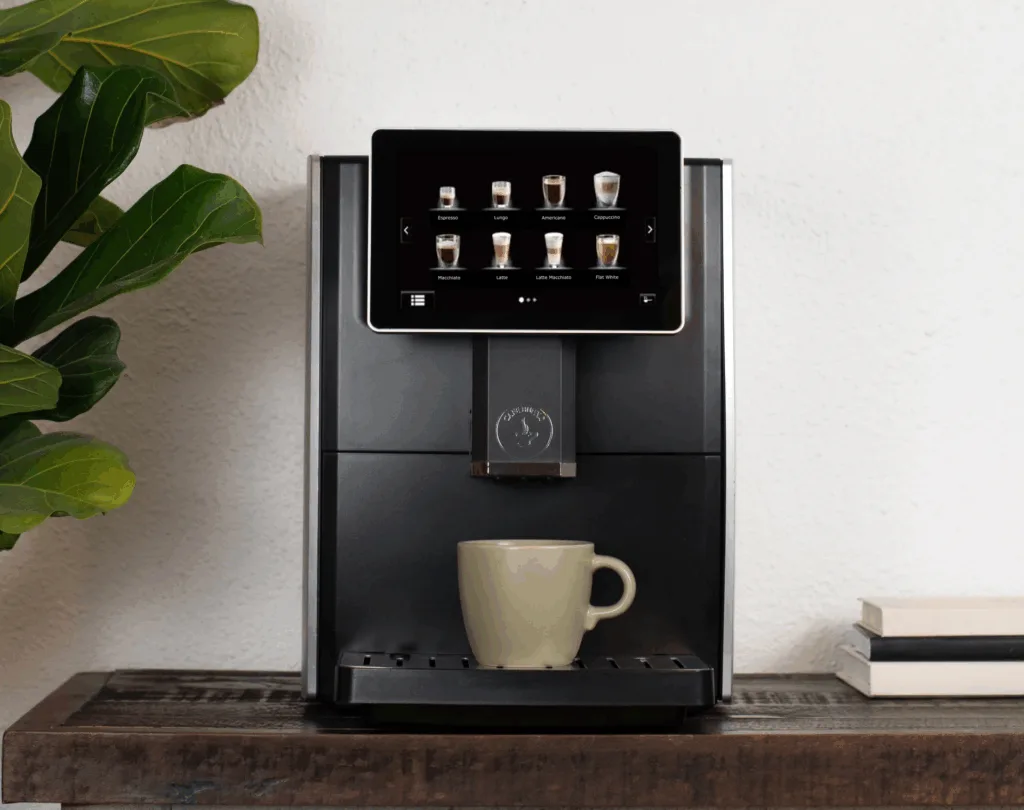
Still unsure which type is right for you? The next section breaks down the key features to look for when choosing your ideal espresso machine.
Key Features That Matter in an Espresso Machine
Not all espresso machines are created equal. Understanding the key features can help you choose a model that fits your budget, skill level, and flavor preferences. Here’s what to look for when comparing machines.
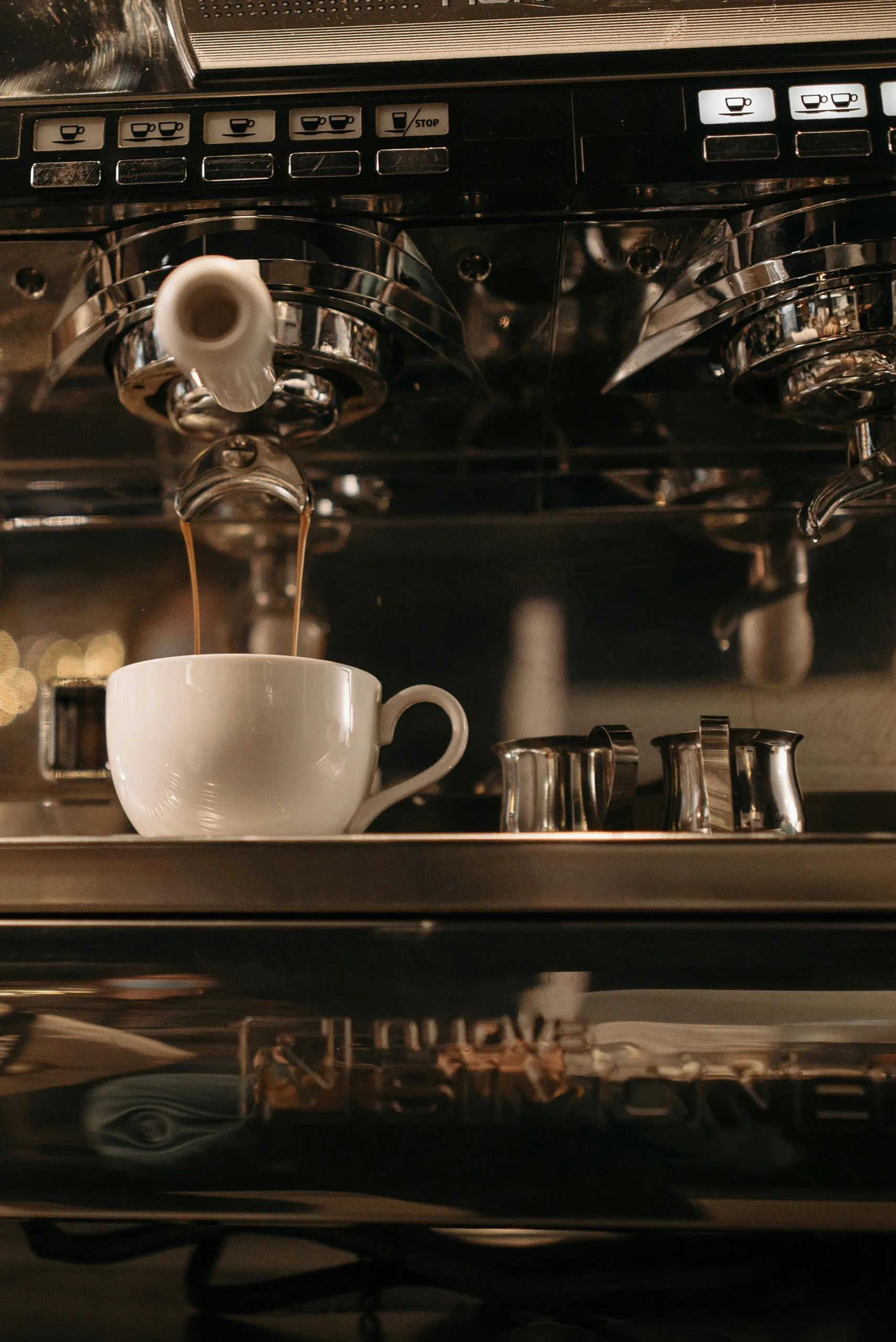
1. Boiler Type
Single boiler, dual boiler, and heat exchange systems all affect how quickly and consistently your machine can brew and steam. Dual boilers offer the best performance for multitasking, while single boilers are budget-friendly.
2. Pressure Bars
A true espresso requires 9 bars of pressure. Many machines advertise 15+ bars, but consistency is more important than raw power. Look for machines that can maintain steady pressure throughout the shot.
3. Portafilter Size
A standard 58mm portafilter is preferred by pros because it holds more grounds and offers better extraction. Entry-level machines may have smaller, pressurized baskets to compensate for grind inconsistency.
4. Temperature Control (PID)
PID controllers allow precise temperature adjustments, giving you consistent espresso shot after shot. It’s a premium feature that dramatically improves espresso quality.
5. Built-In Grinder
Freshly ground coffee is crucial. Some machines include a built-in burr grinder, saving counter space and improving convenience—just make sure it’s adjustable.
6. Steam Wand & Frothing System
If you love lattes and cappuccinos, a quality steam wand is essential. Manual wands offer more control, while automatic frothers are easier for beginners.
These features can dramatically affect your daily espresso routine. Next, let’s explore the top 3 espresso machines that balance quality, features, and popularity in 2025.
Top 3 Espresso Machines of 2025
These are the current best-selling espresso machines on Amazon—and for good reason. Each offers a unique balance of price, features, and user experience. Whether you’re a beginner or a home barista, one of these machines might be your perfect match.
1. Breville Barista Express Espresso Machine
This all-in-one semi-automatic machine is a favorite for aspiring home baristas. It features a built-in conical burr grinder, precise espresso extraction, and a powerful steam wand for milk frothing.
- Built-in grinder for fresh beans
- PID temperature control for consistent shots
- Manual steam wand for latte art

2. Nespresso VertuoPlus by DeLonghi
For convenience-focused espresso lovers, this machine delivers one-touch brewing with Nespresso capsules. It’s compact, fast, and perfect for anyone wanting quality espresso without the mess.
- Capsule-based brewing system
- Automatic capsule recognition for perfect brew size
- Compact design and fast heat-up time
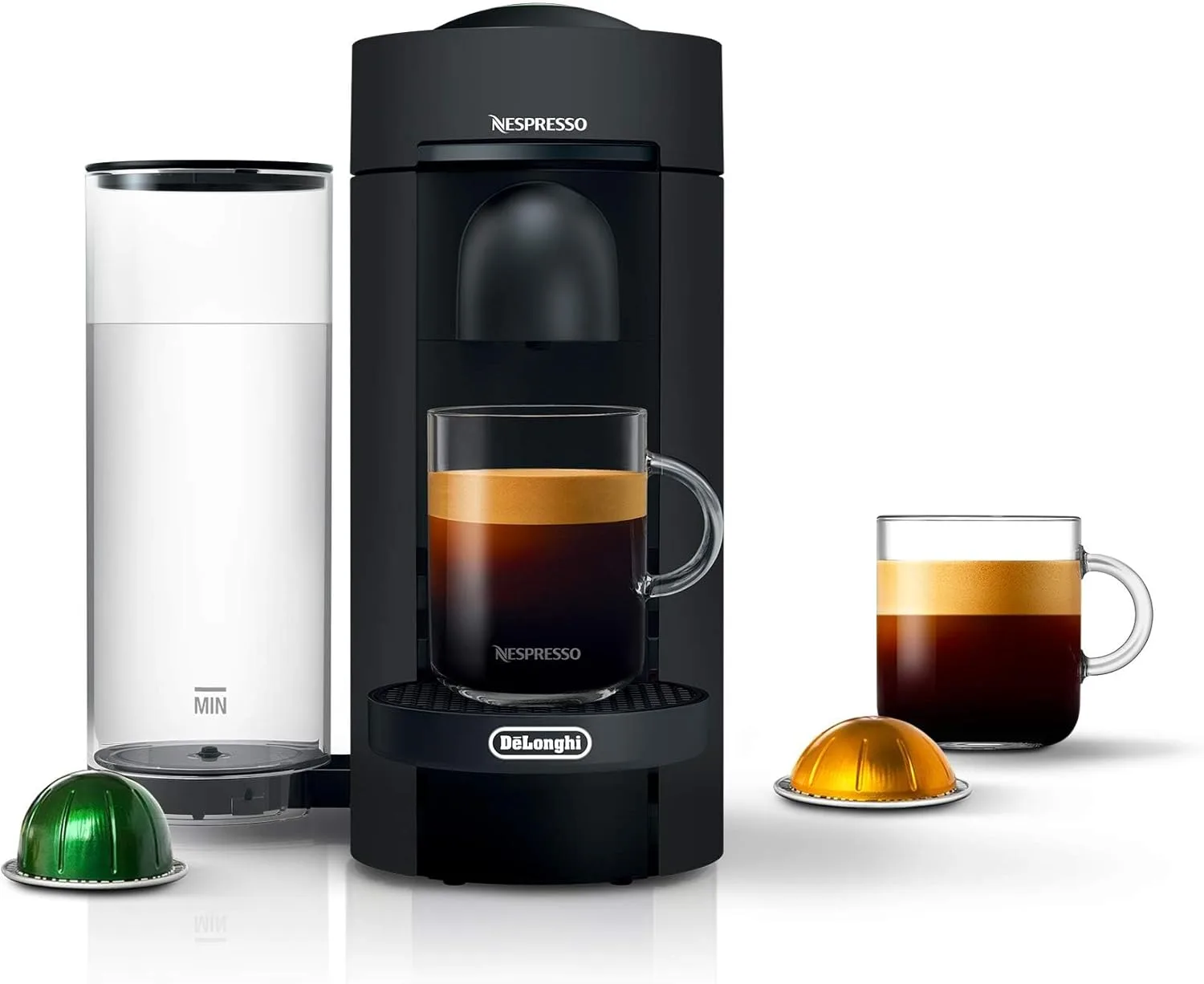
3. IMUSA GAU-18202 Cappuccino and Espresso Machine
This compact, budget-friendly espresso machine is ideal for newcomers. It delivers solid espresso shots and includes a milk frother for lattes and cappuccinos—without breaking the bank.
- Compact footprint, easy to store
- Simple interface for beginners
- Includes milk frother

Up next, we’ll help you choose based on your skill level—starting with beginner-friendly espresso machines that won’t overwhelm you.
Top Picks for Advanced Home Baristas
If you’re past the basics and ready to refine your espresso craft, investing in a more advanced machine can unlock a whole new level of control and consistency. These espresso machines are designed for users who want the tools to dial in every detail—from grind size to shot temperature.
What Defines an Advanced Machine?
Advanced machines offer more control over the brewing process. Key features include:
- Dual boilers – brew and steam simultaneously without temperature drop
- PIDs – precise temperature adjustments for shot stability
- Pre-infusion control – manage extraction pressure and flavor profile
- Unpressurized portafilters – for true crema and better espresso texture
Breville Barista Express: A Popular Pro-Level Option
One standout from our top 3 list is the Breville Barista Express. With its built-in grinder, PID temp control, and full manual steam wand, it’s a great choice for aspiring baristas who want quality and control in one compact unit.
If you’re serious about home espresso, you’ll also want to explore precision espresso grinders and barista-grade espresso accessories to complete your setup.
In the next section, we’ll compare budget and premium machines to help you decide what’s worth the splurge—and what’s not.

Budget vs Premium Espresso Machines: What You Really Get
When shopping for an espresso machine, the price tag can range from under $100 to well over $2,000. So what exactly are you paying for—and is the upgrade worth it?
What to Expect at Different Price Points
- Under $200 – Basic functionality, smaller portafilters, limited steam pressure, plastic parts
- $200–$600 – Improved build quality, better temperature control, manual steam wands, integrated grinders
- $600+ – Pro-level features like PID control, dual boilers, pre-infusion, durable metal bodies
Performance Differences
Premium machines offer consistency, power, and durability. You’ll get more control over temperature, pressure, and milk texture—key factors in making great espresso. Budget machines can still produce solid shots, but they’re more sensitive to grind size and user error.
Who Should Spend More?
If you’re planning to brew daily or want a long-term setup, a mid-tier or premium model is a smart investment. But for casual use or small kitchens, a budget-friendly option like the IMUSA GAU-18202 can be a great start.
Want more tips on multi-functional or compact appliances? Our sister site FindGreenery.com has helpful guides on smart home decor artificial plants that fit tight spaces.
Next, let’s dive into the brands you’ll come across while shopping—and which ones deserve your trust.
Espresso Machine Brands to Know
When choosing an espresso machine, the brand behind it can tell you a lot about performance, durability, and customer support. Here are the most trusted names in the industry, each known for a specific strength.
1.
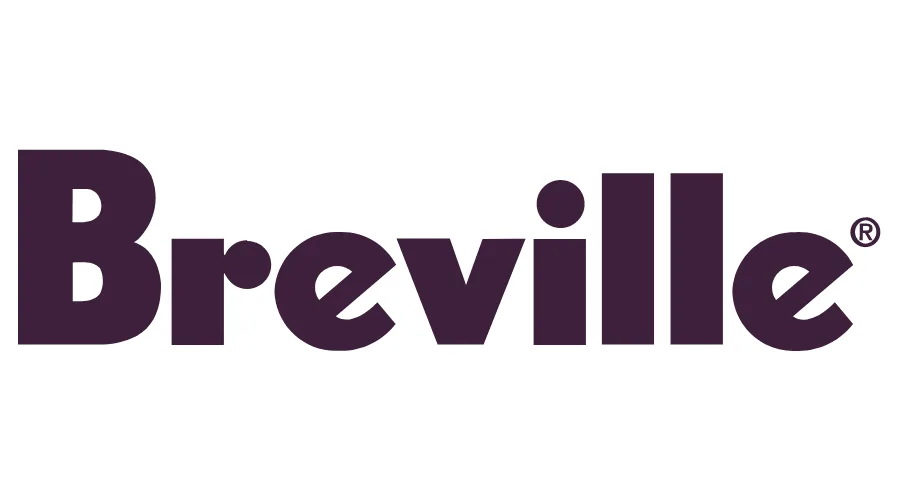
Breville machines are popular for their blend of tech, design, and value. Known for innovation, models like the Barista Express offer features like built-in grinders and PID temperature control at a mid-tier price.
2.

DeLonghi covers everything from capsule machines to advanced manual models. Their Nespresso line is perfect for beginners who want convenience, while their higher-end units offer decent steaming power and longevity.
3.
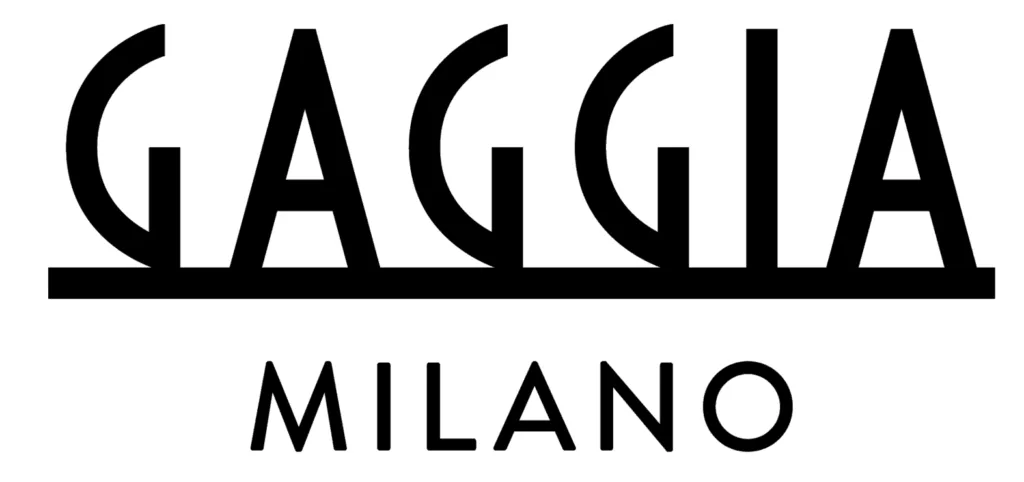
Founded in Italy, Gaggia is known for blending classic aesthetics with modern functionality. Machines like the Gaggia Classic Pro are favored by home baristas for reliability and shot consistency.
4.

If you’re looking for commercial-grade quality at home, Rancilio is a go-to brand. The Silvia is their flagship model—simple, powerful, and built to last.
5.

Owned by Nestlé, Nespresso specializes in capsule-based machines. They’re ideal for users who prioritize speed and convenience over manual control, with options ranging from basic to premium designs.
While brand matters, your ideal machine will also depend on your skill level, counter space, and how much you value manual control. As we dive into cleaning and maintenance next, you’ll see why durability and service support also matter when choosing a brand.
How to Maintain and Clean Your Espresso Machine
To keep your espresso machine running smoothly and pulling great shots, regular cleaning and maintenance are essential. Neglecting upkeep leads to bitter coffee, malfunctioning steam wands, and a much shorter machine lifespan.
Daily Maintenance
- Rinse and purge the portafilter after each use
- Wipe the steam wand immediately after frothing milk
- Run a blank shot (no coffee) to flush out the group head
Weekly Care
- Backflush the group head (non-capsule machines)
- Soak portafilter baskets and shower screens in detergent
- Clean drip tray and water reservoir
Monthly & Seasonal Tasks
- Descale your machine using a suitable solution (check the brand manual)
- Replace water filters if your model includes them
- Inspect the grinder (if integrated) for retained grounds and oils
To make this easier, consider browsing our curated list of cleaning kits and accessories on EspressoInsider.com.
In the next section, we’ll go over the must-have tools that can instantly improve your home espresso game—from tampers to precision scales.
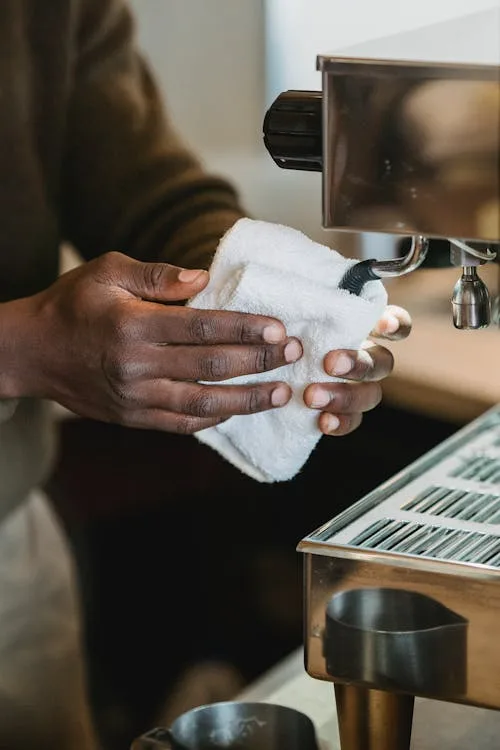
Must-Have Accessories for Better Espresso
Even the best espresso machine needs a few essential accessories to deliver consistent, café-quality results. These tools improve precision, cleanliness, and overall workflow—especially if you’re aiming for barista-level quality at home.
1. Tamper
A quality tamper ensures an even, firm coffee puck for proper extraction. Avoid plastic tampers that come with some machines—instead, opt for a stainless steel model with the correct diameter. Browse our tamper selection.
2. Scale
Measuring your dose and yield by weight ensures shot consistency. A precision scale with a timer lets you track brewing ratios and improve with each pull. Find trusted options in our espresso scale collection.
3. Knock Box
This handy bin makes it easy to discard used coffee pucks without mess. Look for one with a sturdy bar and rubber base for durability and counter stability.
4. Milk Pitcher
For latte art or silky microfoam, a stainless steel milk pitcher with a spout is a must. Sizes vary, but 12oz and 20oz are most common for home use.
5. Cleaning Tools
From group head brushes to backflush detergents, keeping your gear clean is crucial. See our complete range of espresso machine cleaning tools.
These accessories don’t just add convenience—they’re essential for getting the most out of your equipment. Next up, we’ll cover the most common espresso mistakes and how to avoid them.

Common Espresso Machine Mistakes to Avoid
Even with a great espresso machine, a few small missteps can lead to bitter shots, sputtering extractions, or broken crema. Avoiding these common mistakes can dramatically improve your espresso quality—especially if you’re new to home brewing.
1. Using the Wrong Grind Size
Espresso requires a fine, consistent grind. Too coarse, and your shot will be weak; too fine, and it will choke your machine. If your espresso tastes off, adjusting your grind is the first place to start.
2. Tamping Too Hard—or Not Enough
Uneven tamping leads to channeling, where water flows unevenly through the puck. Aim for firm, even pressure—not brute force.
3. Skipping Warm-Up Time
Espresso machines need 5–15 minutes to fully heat up. Brewing too soon leads to sour shots and temperature instability.
4. Using Tap Water Without Filtration
Hard water can damage internal components and affect flavor. Use filtered or bottled water if your local supply is high in minerals.
5. Neglecting Regular Maintenance
Even the best gear degrades without cleaning. Refer to our cleaning guide for what to do and when.
Now that you know what to avoid, let’s wrap up with answers to some of the most frequently asked questions about owning an espresso machine.
Choosing the Right Espresso Machine for Your Lifestyle
There’s no one-size-fits-all espresso machine. The best model for you depends on how often you drink espresso, how hands-on you want to be, and how much counter space you can spare. Here’s a lifestyle-based breakdown to help you decide.
If You Live in a Small Apartment
Look for compact machines with a small footprint, like capsule-based or single-boiler models. Prioritize ease of cleaning and vertical storage. Bonus if it includes a built-in grinder to save space.
If You Make Espresso Daily
You’ll want something durable with consistent temperature control. A semi-automatic machine with PID, a quality steam wand, and good build materials will serve you best. Expect to clean and maintain it more often too.
If You Prefer Convenience Over Control
Super-automatic or pod-based machines make sense here. They handle grinding, dosing, brewing, and frothing with minimal input. You give up some shot customization, but gain speed and simplicity.
If You’re a Tech Enthusiast
Modern machines now come with app integration, programmable shot settings, and smart notifications. Great for users who want data-driven brewing or remote control via Wi-Fi.
If You Love Hosting Guests
Choose a machine with a large water tank, fast recovery time, and dual boilers if possible. You’ll be pulling back-to-back drinks, so recovery speed and milk frothing efficiency matter.
Espresso Machine Setup Tips for First-Time Owners
Just brought home your first espresso machine? Before you pull your first shot, it’s worth taking a few steps to ensure your setup is clean, safe, and ready for great espresso from day one.
1. Unbox Carefully and Inspect All Parts
Make sure your machine includes everything listed in the manual—portafilter, baskets, water tank, power cord, manuals, etc. Check for any damage or missing pieces before discarding the packaging.
2. Choose the Right Spot
Set your machine on a flat, level surface near a grounded power outlet. Leave room behind and above for the water tank and steam wand. Avoid placing it under low cabinets that trap heat or steam.
3. Use Good Water
Hard tap water can cause limescale buildup. Use filtered or bottled water to protect your boiler and improve flavor. Some machines come with water filters—install them if provided.
4. Prime and Flush the Machine
Before brewing, run a few cycles of water through the group head and steam wand. This clears any shipping residue or manufacturing oils and warms up internal components.
5. Don’t Skip the Manual
Every machine is a little different. Skimming the instructions helps you avoid simple setup mistakes and understand cleaning intervals, pressure quirks, and brew modes.
Once you’re set up, you’ll be ready to start experimenting with your grind size, tamp, and brew time. Don’t worry—practice makes perfect. Up next, we’ll cover whether buying a used machine is ever a smart move.
Should You Buy a New or Used Espresso Machine?
Espresso machines can be a major investment. If you’re eyeing a higher-end model, it might be tempting to buy used or refurbished to save money. But is it worth it? Let’s break down the pros and cons.
✅ Pros of Buying Used
- Lower cost: You can often get premium features for hundreds less than new.
- Eco-friendly: Extends the lifespan of machines that might otherwise be discarded.
- Refurbished options: Some manufacturers offer certified refurb units with warranties.
❌ Cons of Buying Used
- Unknown wear and tear: You don’t know how often it was cleaned or descaled.
- No warranty: Most secondhand machines have no protection if something fails.
- Outdated parts: It may be harder to find replacement filters, baskets, or internal components.
When It Makes Sense to Buy Used
If you’re buying from a trusted seller or directly from a manufacturer’s refurb program, going used can be a smart way to test higher-end machines without the full price tag. Just make sure to inspect the machine in person or get a clear return policy.
For peace of mind and product support, buying new—especially through reputable channels like EspressoInsider.com—may be the safer bet for most people.
With that covered, it’s time for the most common espresso machine questions we get—answered clearly in our FAQ.
How Water Quality Affects Your Espresso Machine and Flavor
Water makes up 90–95% of your espresso. Yet it’s one of the most overlooked variables in home brewing. Using the wrong type of water can damage your espresso machine, dull the flavor of your coffee, and lead to scale buildup that shortens its lifespan.
Hard Water vs. Soft Water
Hard water contains minerals like calcium and magnesium that can build up inside boilers, valves, and group heads. Over time, this leads to inconsistent performance and costly repairs. Soft water may prevent scale, but it can taste flat and affect coffee extraction.
The Ideal Water for Espresso
- Total dissolved solids (TDS): 75–250 ppm
- pH level: Close to 7 (neutral)
- Low chlorine and calcium content
The Specialty Coffee Association even publishes water standards used by professional baristas to achieve better taste and longer machine life.
What Should You Use at Home?
If your tap water is hard, consider using a water filter pitcher or bottled spring water. Some machines include filters for their reservoir—install and replace them regularly. Avoid distilled or reverse osmosis (RO) water unless remineralized, as it can cause sensor issues and extraction problems.
Good water protects your gear and enhances your espresso’s flavor. It’s a small change that makes a big difference.

Espresso Machine Terminology: A Beginner’s Glossary
Feeling overwhelmed by espresso jargon? You’re not alone. Here’s a simple glossary of common espresso machine terms to help you make sense of the specs, reviews, and tutorials.
Portafilter
The handled component that holds the ground coffee. Comes in pressurized (easier for beginners) and unpressurized (pro-style) versions.
Group Head
The part of the machine where the portafilter locks in. It delivers hot water through the coffee grounds.
Pump Pressure
Measured in bars. 9 bars is ideal for espresso. Higher pressure doesn’t always mean better extraction—consistency is key.
PID Controller
A digital temperature control system that keeps water temp stable throughout the brewing process. Improves shot consistency.
Boiler (Single, Dual, Heat Exchanger)
Controls water temperature for brewing and steaming. Dual boilers let you do both simultaneously. Heat exchanger systems strike a balance.
Pre-Infusion
A brief period where water lightly soaks the coffee puck before full pressure is applied. Helps avoid channeling and improves flavor.
Backflushing
A cleaning method for machines with 3-way valves. Uses a blank portafilter basket to force water through the group head in reverse.
Understanding these basics makes shopping for and using your espresso machine way less intimidating—and way more fun.
Frequently Asked Questions (FAQs) About Espresso Machines
How long does an espresso machine last?
With proper care, most home espresso machines last 5–10 years. Higher-end models with metal components can go even longer, especially if descaled regularly and cleaned often.
Do I need a separate grinder?
If your machine doesn’t have a built-in grinder, yes—you’ll need one. Freshly ground beans are critical for flavor and crema. Check out our Grinders & Gear section for options.
Are pod machines like Nespresso real espresso?
Not quite. While pod systems offer pressure-brewed coffee, they lack the grind control and crema quality of traditional espresso. They’re a great option for speed and convenience, though.
What’s the best machine for a small kitchen?
Look for compact or all-in-one units with a built-in grinder. For more interesting interior decor picks check out FindGreenery.com is a great resource beyond just coffee appliances.
Can I leave my espresso machine on all day?
Technically yes, but it’s not ideal unless the machine has an energy-saving or eco mode. Leaving it on shortens lifespan and increases power use. Some models offer programmable auto-off features.
Conclusion: Find the Right Espresso Machine for You
Whether you’re just starting out or ready to upgrade your setup, choosing the right espresso machine can change your daily routine—and your coffee game—for the better.
🔑 Key Takeaways:
- There are four main types of machines—each suited to different skill levels and preferences
- Features like PID control, steam wands, and built-in grinders impact both flavor and usability
- Top machines like the Breville Barista Express and Nespresso VertuoPlus balance performance and ease of use
- Beginner-friendly machines focus on convenience, while advanced models offer full control
- Accessories and cleaning tools are essential for consistent, high-quality espresso
If you’re ready to take the next step, head to our espresso machine category to compare the top-rated options available right now.
Thanks for reading! Feel free to bookmark this guide or share it with a fellow coffee lover who’s on their own espresso journey.


Leave a Reply
You must be logged in to post a comment.